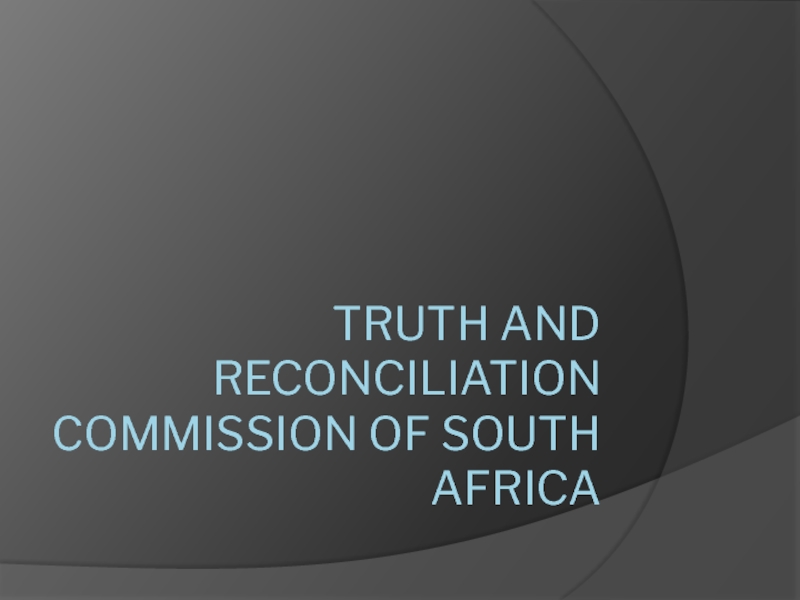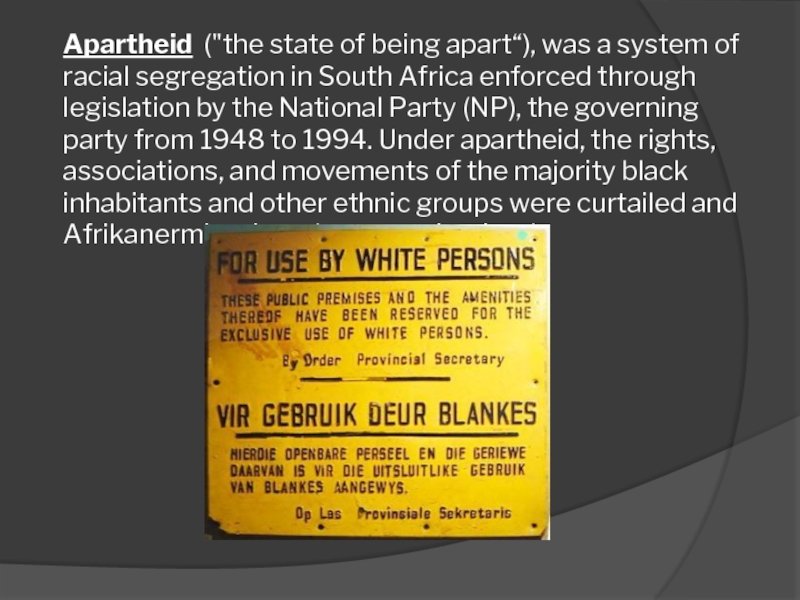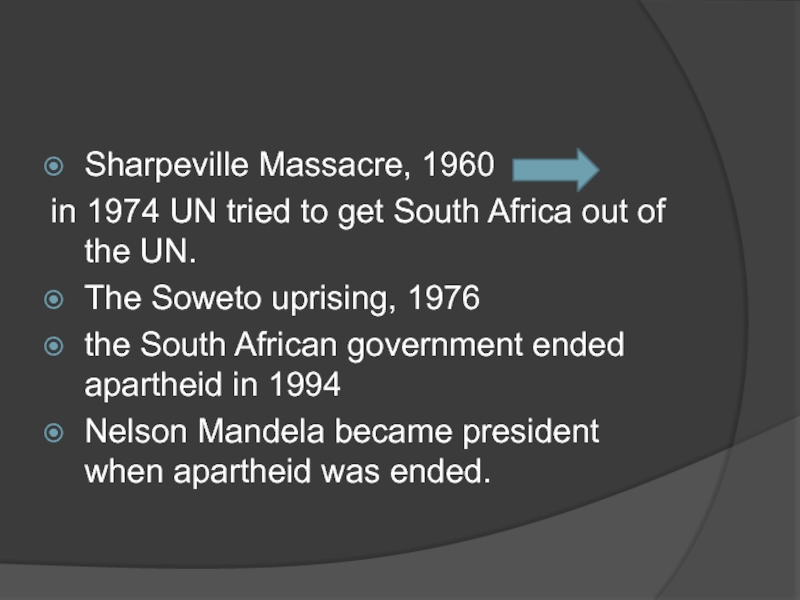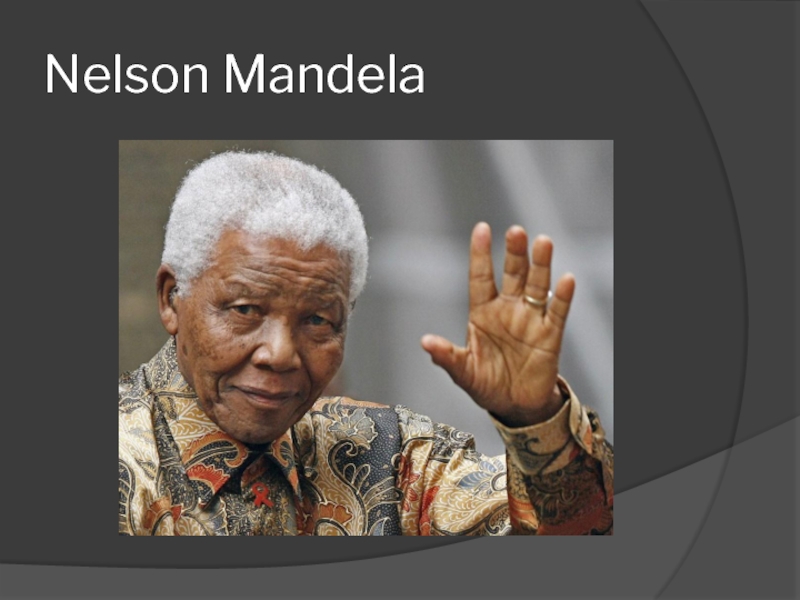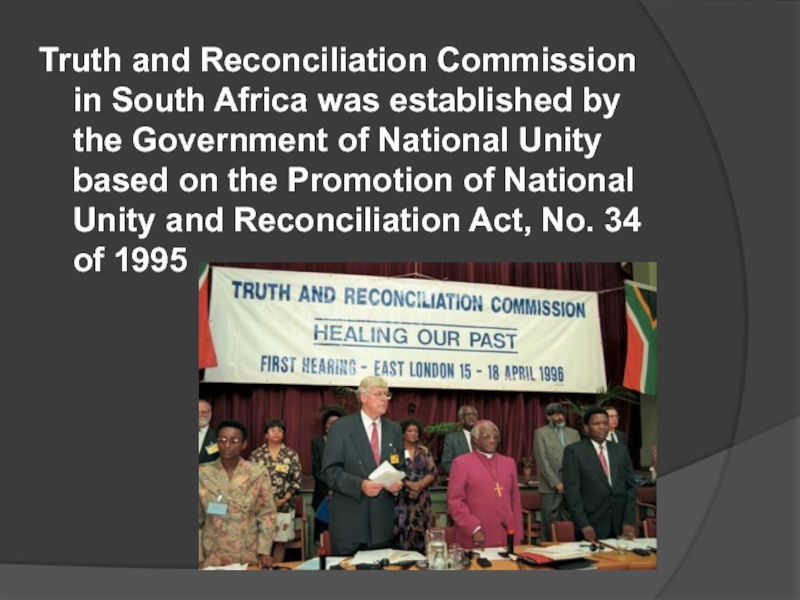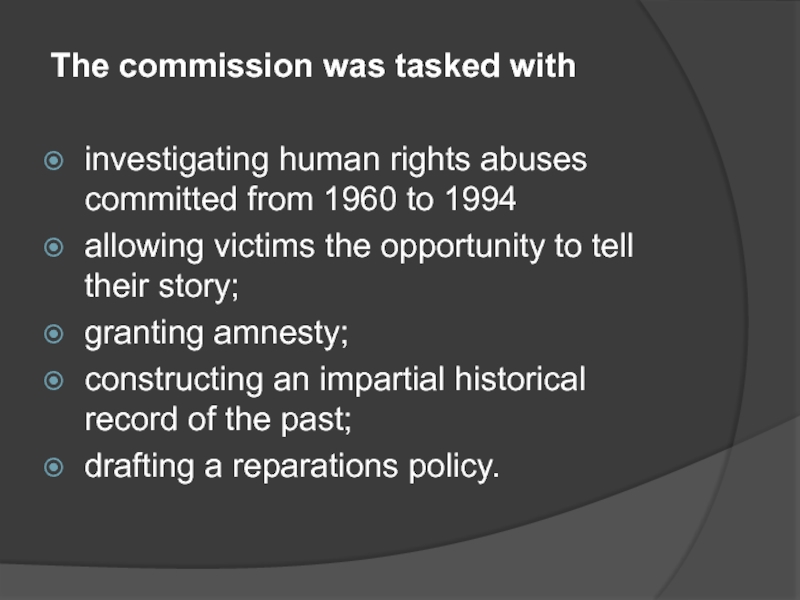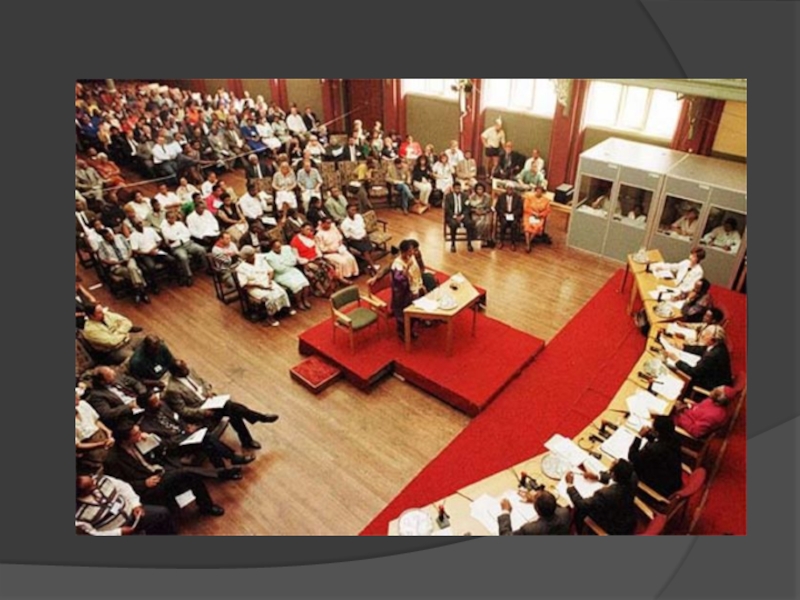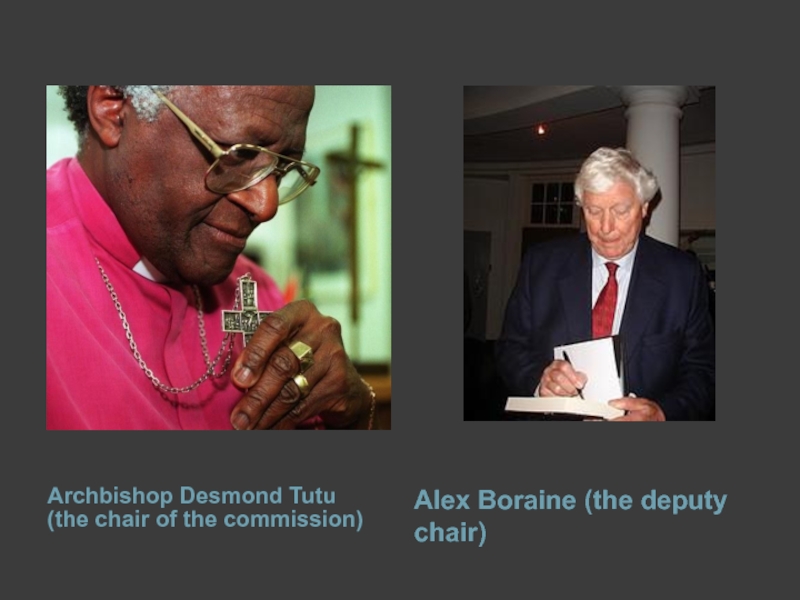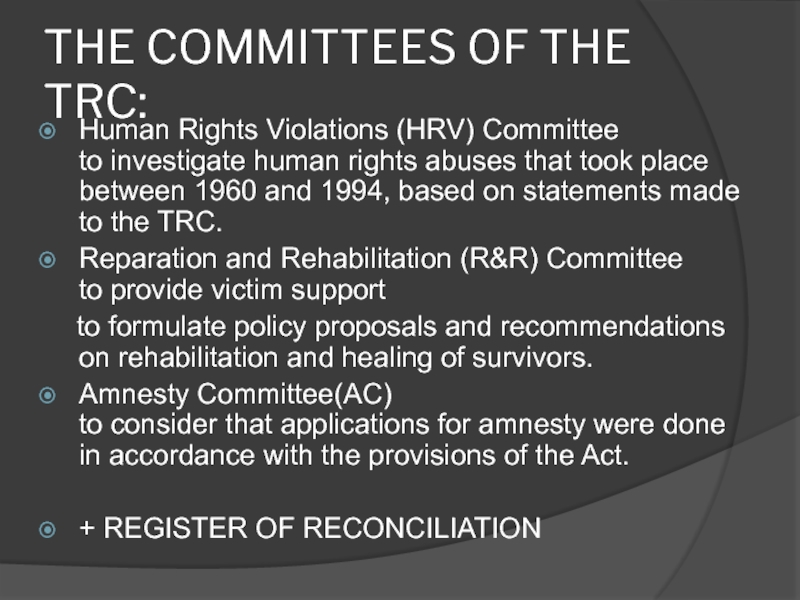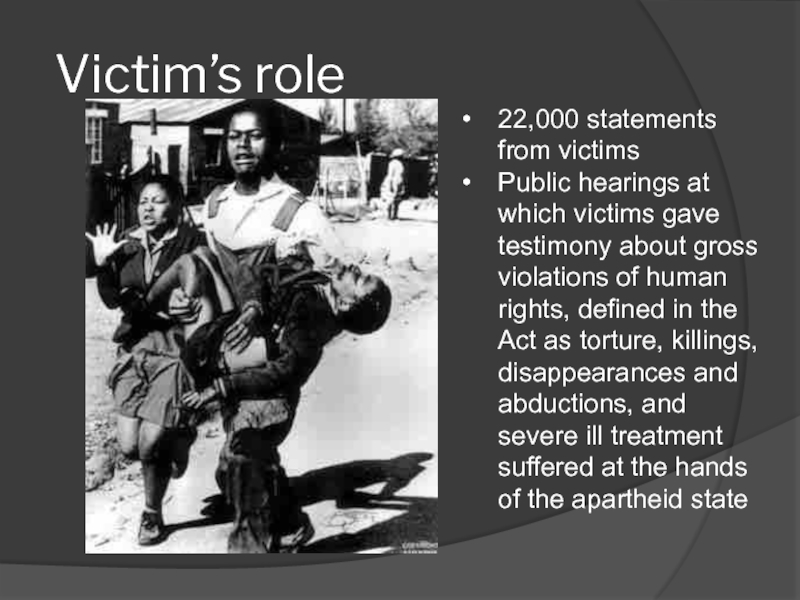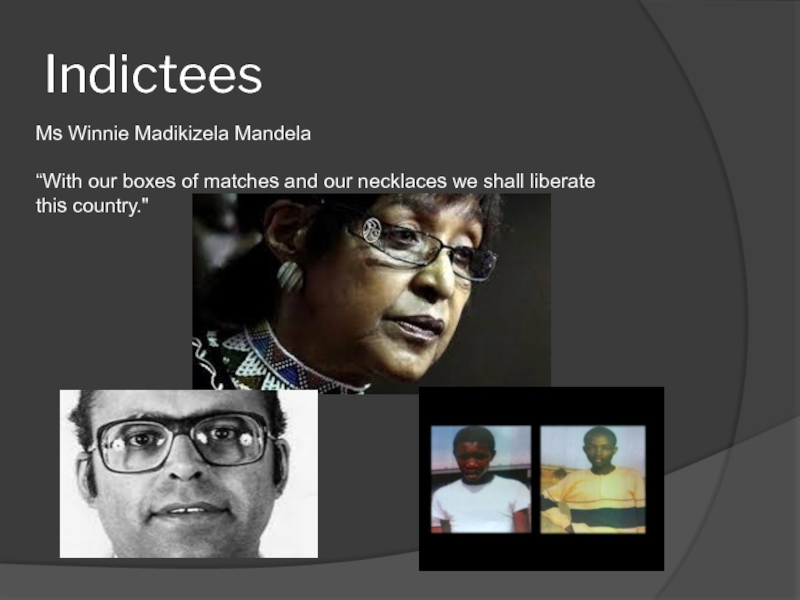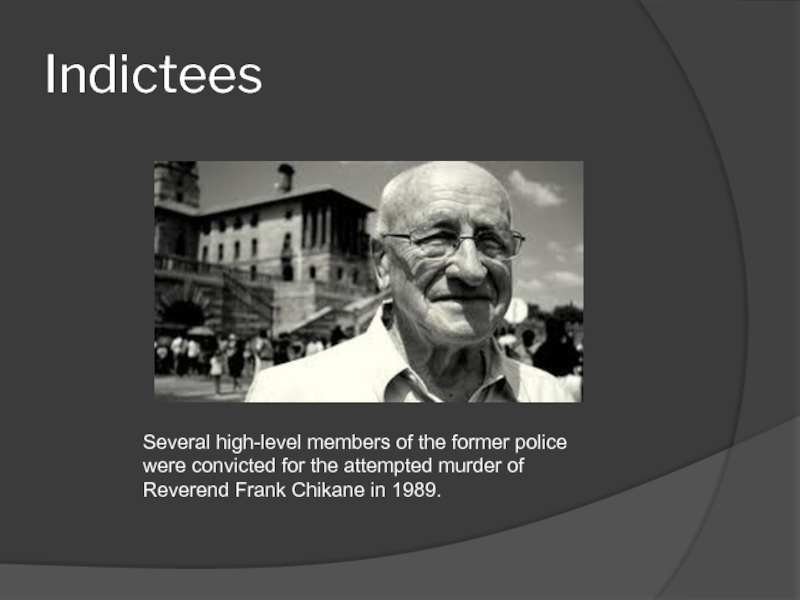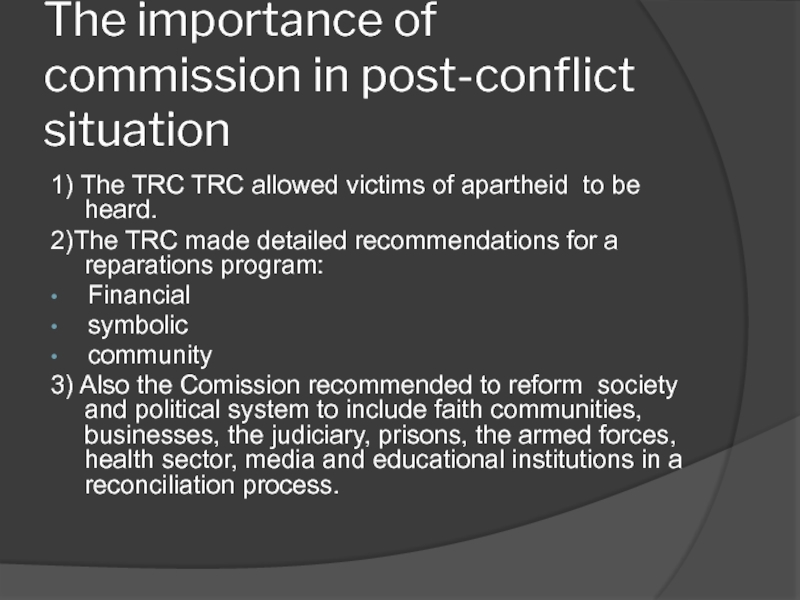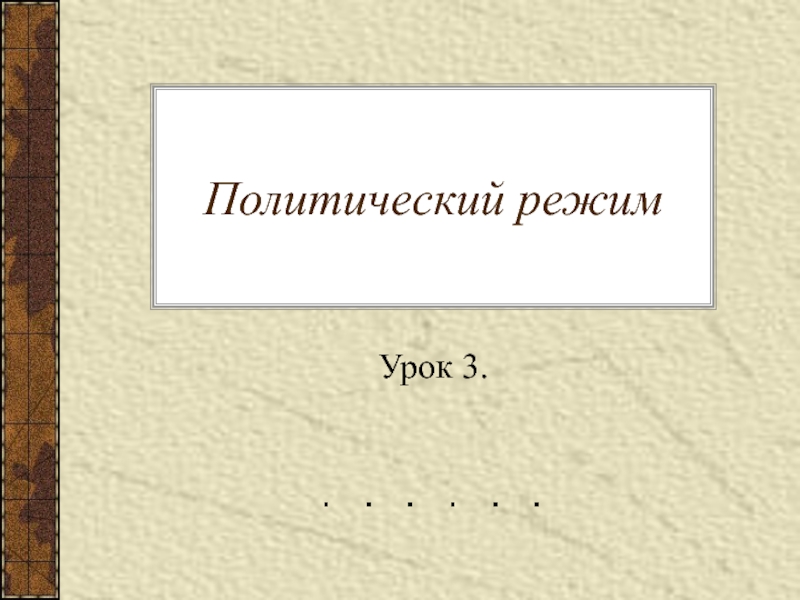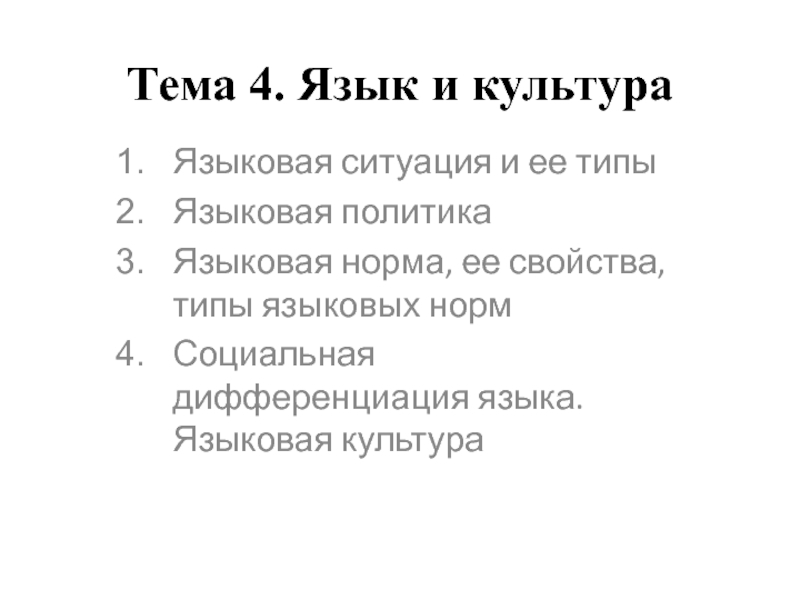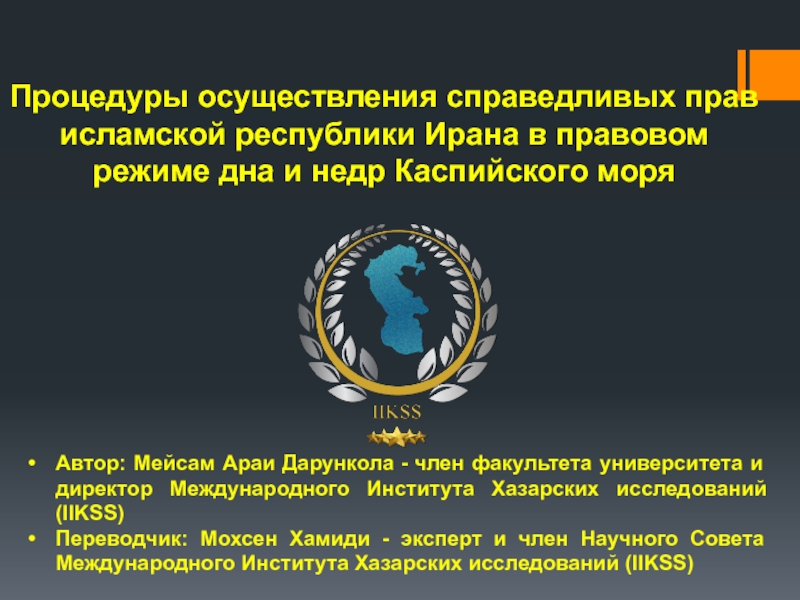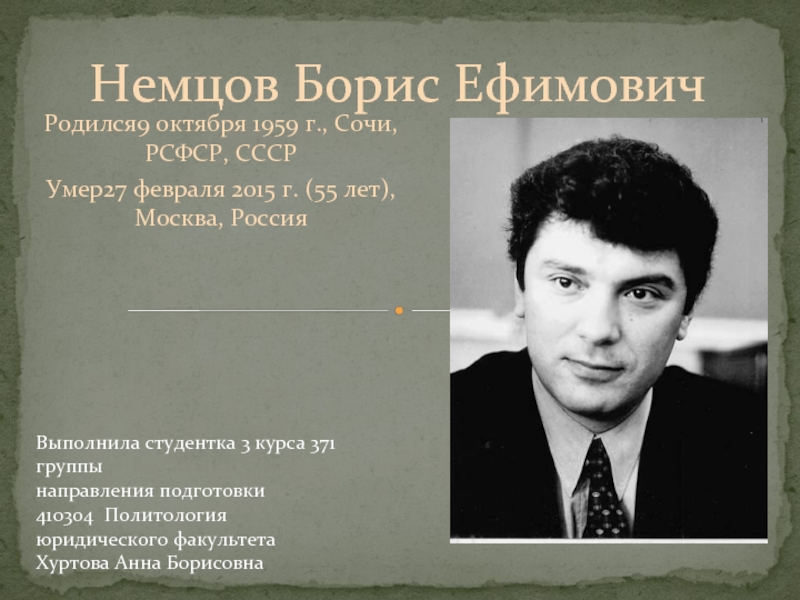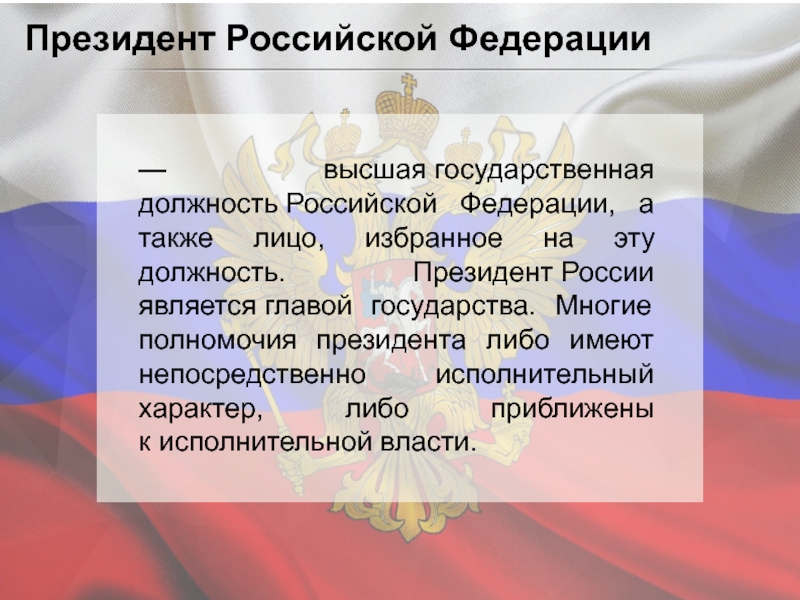- Главная
- Разное
- Дизайн
- Бизнес и предпринимательство
- Аналитика
- Образование
- Развлечения
- Красота и здоровье
- Финансы
- Государство
- Путешествия
- Спорт
- Недвижимость
- Армия
- Графика
- Культурология
- Еда и кулинария
- Лингвистика
- Английский язык
- Астрономия
- Алгебра
- Биология
- География
- Детские презентации
- Информатика
- История
- Литература
- Маркетинг
- Математика
- Медицина
- Менеджмент
- Музыка
- МХК
- Немецкий язык
- ОБЖ
- Обществознание
- Окружающий мир
- Педагогика
- Русский язык
- Технология
- Физика
- Философия
- Химия
- Шаблоны, картинки для презентаций
- Экология
- Экономика
- Юриспруденция
Truth and reconciliation commission of South Аfrica презентация
Содержание
- 1. Truth and reconciliation commission of South Аfrica
- 2. Apartheid ("the state of being apart“),
- 3. Sharpeville Massacre, 1960 in 1974 UN tried
- 4. Nelson Mandela
- 5. Truth and Reconciliation Commission in South Africa
- 6. The commission was tasked with investigating
- 8. Archbishop Desmond Tutu (the chair of the commission) Alex Boraine (the deputy chair)
- 9. THE COMMITTEES OF THE TRC: Human Rights
- 10. Victim’s role 22,000 statements from victims Public
- 11. Indictees Ms Winnie Madikizela Mandela
- 12. Indictees Several high-level members of the former
- 13. Indictees The trial of former minister of
- 14. The importance of commission in post-conflict situation
Слайд 2 Apartheid ("the state of being apart“), was a system of racial
segregation in South Africa enforced through legislation by the National Party (NP), the governing party from 1948 to 1994. Under apartheid, the rights, associations, and movements of the majority black inhabitants and other ethnic groups were curtailed and Afrikanerminority rule was maintained.
Слайд 3Sharpeville Massacre, 1960
in 1974 UN tried to get South Africa out
of the UN.
The Soweto uprising, 1976
the South African government ended apartheid in 1994
Nelson Mandela became president when apartheid was ended.
The Soweto uprising, 1976
the South African government ended apartheid in 1994
Nelson Mandela became president when apartheid was ended.
Слайд 5Truth and Reconciliation Commission in South Africa was established by the
Government of National Unity based on the Promotion of National Unity and Reconciliation Act, No. 34 of 1995
Слайд 6The commission was tasked with
investigating human rights abuses committed from 1960
to 1994
allowing victims the opportunity to tell their story;
granting amnesty;
constructing an impartial historical record of the past;
drafting a reparations policy.
allowing victims the opportunity to tell their story;
granting amnesty;
constructing an impartial historical record of the past;
drafting a reparations policy.
Слайд 9THE COMMITTEES OF THE TRC:
Human Rights Violations (HRV) Committee
to investigate human
rights abuses that took place between 1960 and 1994, based on statements made to the TRC.
Reparation and Rehabilitation (R&R) Committee to provide victim support
to formulate policy proposals and recommendations on rehabilitation and healing of survivors.
Amnesty Committee(AC) to consider that applications for amnesty were done in accordance with the provisions of the Act.
+ REGISTER OF RECONCILIATION
Reparation and Rehabilitation (R&R) Committee to provide victim support
to formulate policy proposals and recommendations on rehabilitation and healing of survivors.
Amnesty Committee(AC) to consider that applications for amnesty were done in accordance with the provisions of the Act.
+ REGISTER OF RECONCILIATION
Слайд 10 Victim’s role
22,000 statements from victims
Public hearings at which victims gave testimony
about gross violations of human rights, defined in the Act as torture, killings, disappearances and abductions, and severe ill treatment suffered at the hands of the apartheid state
Слайд 11Indictees
Ms Winnie Madikizela Mandela
“With our boxes of matches and our
necklaces we shall liberate this country."
Слайд 12Indictees
Several high-level members of the former police were convicted for the
attempted murder of Reverend Frank Chikane in 1989.
Слайд 13Indictees
The trial of former minister of defense Magnus Malan and nineteen
others were charged together with other former senior military officers for murdering 13 people (including seven children) in the KwaMakhutha massacre in 1987
Слайд 14The importance of commission in post-conflict situation
1) The TRC TRC allowed
victims of apartheid to be heard.
2)The TRC made detailed recommendations for a reparations program:
Financial
symbolic
community
3) Also the Comission recommended to reform society and political system to include faith communities, businesses, the judiciary, prisons, the armed forces, health sector, media and educational institutions in a reconciliation process.
2)The TRC made detailed recommendations for a reparations program:
Financial
symbolic
community
3) Also the Comission recommended to reform society and political system to include faith communities, businesses, the judiciary, prisons, the armed forces, health sector, media and educational institutions in a reconciliation process.
